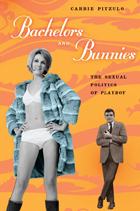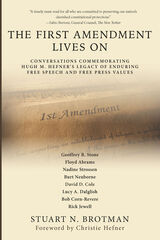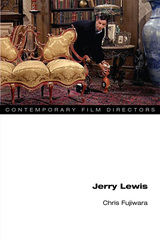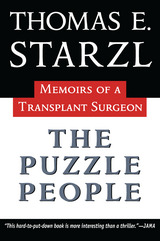
For a lot of people, thoughts about the sexual politics of Playboy run along the lines of what Gloria Steinem reportedly once told Hugh Hefner: “A woman reading Playboy feels a little like a Jew reading a Nazi manual.” Hefner’s magazine celebrates men as swinging bachelors and women as objects of desire; ergo, it’s sexist.
Not so fast, says Carrie Pitzulo. With Bachelors and Bunnies, she delves into the history of the magazine to reveal its surprisingly strong record of support for women’s rights and the modernization of sexual and gender roles. Taking readers behind the scenes of Playboy’s heyday, Pitzulo shows how Hefner’s own complicated but thoughtful perspective on modern manhood, sexual liberation, and feminism played into debates—both in the editorial offices and on the magazine’s pages—about how Playboy’s trademark “girl next door” appeal could accommodate, acknowledge, and even honor the changing roles and new aspirations of women in postwar America. Revealing interviews with Hugh Hefner and his daughter (and later Playboy CEO) Christie Hefner, as well as with a number of editors and even Playmates, show that even as the magazine continued to present a romanticized notion of gender difference, it again and again demonstrated a commitment to equality and expanded opportunities for women.
Offering a surprising new take on a twentieth-century icon, Bachelors and Bunnies goes beyond the smoking jacket and the centerfold to uncover an unlikely ally for the feminist cause.

Hugh M. Hefner’s legacy of enduring free speech and free press values is embodied in the Hugh M. Hefner First Amendment Awards, established in 1979, which honor leading First Amendment scholars and advocates. Hefner also had a lifelong interest in film censorship issues and supported teaching about them at the University of Southern California for 20 years. His deep commitment to these values was confirmed when the author was granted unrestricted access to over 3,000 personal scrapbooks, which Hefner had kept in order to track free speech and press issues during his lifetime.
The format of the book is an homage to the in-depth conversational interviews Hefner pioneered as the editor and publisher of Playboy magazine. Stuart Brotman conducted in-person conversations with eight persons who in their lifetimes have come to represent a “greatest generation” of free speech and free press scholars and advocates. Notably, these conversations include:
Geoffrey R. Stone
Floyd Abrams
Nadine Strossen
Burt Neuborne
David D. Cole
Lucy A. Dalglish
Bob Corn-Revere
Rick Jewell

Well known for his slapstick comedic style, Jerry Lewis has also delighted worldwide movie audiences with a directing career spanning five decades. One of American cinema's great innovators, Lewis made unmistakably personal films that often focused on an ideal masculine image and an anarchic, manic acting out of the inability to assume this image. Films such as The Bellboy, The Errand Boy, Three on a Couch, and The Big Mouth present a series of thematic variations on this tension, in which such questions as how to be a man, how to be popular, and how to maintain relationships are posed within frameworks that set up a liberating and exhilarating confusion of roles and norms. The Nutty Professor and The Patsy are especially profound and painful examinations of the difficulty experienced by Lewis's character in reconciling loving himself and being loved by others.
With sharp, concise observations, Chris Fujiwara examines this visionary director of self-referential comedic masterpieces. The book also includes an enlightening interview with Lewis that offers unique commentary on the creation and study of comedy.

Given the tensions and demands of medicine, highly successful physicians and surgeons rarely achieve equal success as prose writers. It is truly extraordinary that a major, international pioneer in the controversial field of transplant surgery should have written a spellbinding, and heart-wrenching, autobiography.
Thomas Starzl grew up in LeMars, Iowa, the son of a newspaper publisher and a nurse. His father also wrote science fiction and was acquainted with the writer Ray Bradbury. Starzl left the family business to enter Northwestern University Medical School where he earned both and M.D. and a PhD. While he was a student, and later during his surgical internship at the Johns Hopkins Hospital, he began the series of animal experiments that led eventually to the world’s first transplantation of the human liver in 1963.
Throughout his career, first at the University of Colorado and then at the University of Pittsburgh, he has aroused both worldwide admiration and controversy. His technical innovations and medical genius have revolutionized the field, but Starzl has not hesitated to address the moral and ethical issues raised by transplantation. In this book he clearly states his position on many hotly debated issues including brain death, randomized trials for experimental drugs, the costs of transplant operations, and the system for selecting organ recipients from among scores of desperately ill patients.
There are many heroes in the story of transplantation, and many “puzzle people,” the patients who, as one journalist suggested, might one day be made entirely of various transplanted parts. They are old and young, obscure and world famous. Some have been taken into the hearts of America, like Stormie Jones, the brave and beautiful child from Texas. Every patient who receives someone else’s organ - and Starzl remembers each one - is a puzzle. “It was not just the acquisition of a new part,” he writes. “The rest of the body had to change in many ways before the gift could be accepted. It was necessary for the mind to see the world in a different way.” The surgeons and physicians who pioneered transplantation were also changed: they too became puzzle people. “Some were corroded or destroyed by the experience, some were sublimated, and none remained the same.”
READERS
Browse our collection.
PUBLISHERS
See BiblioVault's publisher services.
STUDENT SERVICES
Files for college accessibility offices.
UChicago Accessibility Resources
home | accessibility | search | about | contact us
BiblioVault ® 2001 - 2024
The University of Chicago Press









